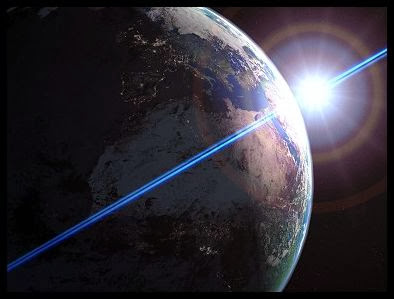Light
Light is a
form of energy which our
sense of sight can detect. It is made of electro-magnetic radiation and
travels in a straight line. Red, green and blue are
the primary colors of light. Mixing them in various ways will make all other
colors, including white.

The speed of light
The speed of light is the speed at which light travels. It is about 300,000 kilometres per second. Nothing travels faster than light. Wow, that's fast! When light travels through matter, like air or water, it slows down some, but it's still pretty fast.
To give you and idea as to how fast light is, we'll give you some examples:

The speed of light
The speed of light is the speed at which light travels. It is about 300,000 kilometres per second. Nothing travels faster than light. Wow, that's fast! When light travels through matter, like air or water, it slows down some, but it's still pretty fast.
To give you and idea as to how fast light is, we'll give you some examples:
The sun is almost 150 million
km from the Earth. It takes around 8 minutes for light to get from the sun to
the Earth.
It takes around 1.3 seconds
for light to go from the moon to the Earth.
Light helps us to survive
Without sunlight our world
would be a dead dark place. Sunlight does more than just help us see (which is
pretty great, too). Sunlight keeps the Earth warm, so it's not just a
frozen ball in outer space. It also is a major component in photosynthesis
which is how most of the plant life on Earth grows and gets nutrients. Sunlight
is a source of energy as well as a source of vitamin D for humans.
Refraction
Normally, light travels in a
straight path called a ray, however, when passing through transparent materials,
like water or glass, light bends or turns.
One example of refraction is a
prism.
Prisms are unique in that each
color of light is refracted to a different angle.
Lenses use refraction to help
us see things. Telescopes help us to see things far away and microscopes enable
us to see very small things. Even glasses use refraction so that we can see
everyday things more clearly.
Now play and learn:








